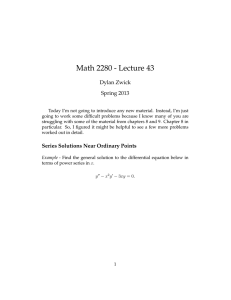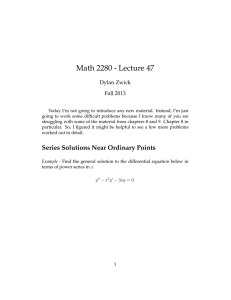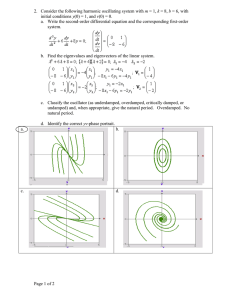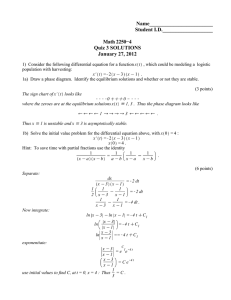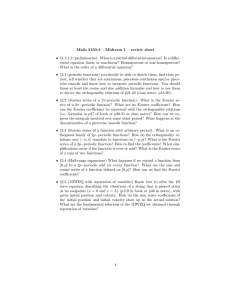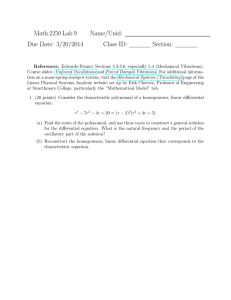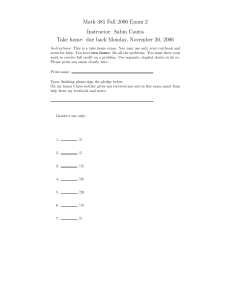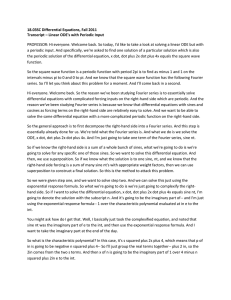SM212 Written Final Spring 2003-2004 May 4, 2004
advertisement
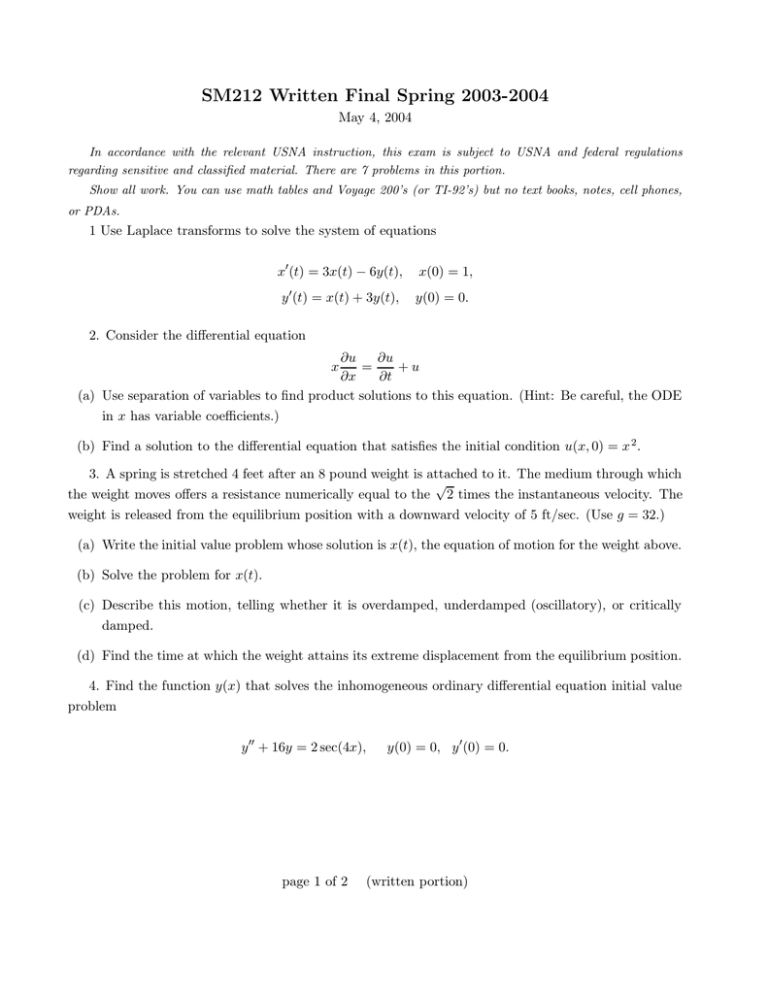
SM212 Written Final Spring 2003-2004
May 4, 2004
In accordance with the relevant USNA instruction, this exam is subject to USNA and federal regulations
regarding sensitive and classified material. There are 7 problems in this portion.
Show all work. You can use math tables and Voyage 200’s (or TI-92’s) but no text books, notes, cell phones,
or PDAs.
1 Use Laplace transforms to solve the system of equations
x0 (t) = 3x(t) − 6y(t),
x(0) = 1,
y 0 (t) = x(t) + 3y(t),
y(0) = 0.
2. Consider the differential equation
∂u
∂u
=
+u
∂x
∂t
(a) Use separation of variables to find product solutions to this equation. (Hint: Be careful, the ODE
in x has variable coefficients.)
x
(b) Find a solution to the differential equation that satisfies the initial condition u(x, 0) = x 2 .
3. A spring is stretched 4 feet after an 8 pound weight is attached to it. The medium through which
√
the weight moves offers a resistance numerically equal to the 2 times the instantaneous velocity. The
weight is released from the equilibrium position with a downward velocity of 5 ft/sec. (Use g = 32.)
(a) Write the initial value problem whose solution is x(t), the equation of motion for the weight above.
(b) Solve the problem for x(t).
(c) Describe this motion, telling whether it is overdamped, underdamped (oscillatory), or critically
damped.
(d) Find the time at which the weight attains its extreme displacement from the equilibrium position.
4. Find the function y(x) that solves the inhomogeneous ordinary differential equation initial value
problem
y 00 + 16y = 2 sec(4x),
page 1 of 2
y(0) = 0, y 0 (0) = 0.
(written portion)
5. Use Euler’s Method with a increment step size of h = 1/2 to approximate y(1), where y(x) is the
solution to the initial value problem y 0 = y 2 − x2 , y(0) = 1.
(
1 if 0 ≤ t ≤ 3
6. Let f (t) =
.
0
if t ≥ 3
(a) Write f (t) in terms of the unit step function.
(b) Use (a) to find L {f (t)}.
(c) The charge on an electrical circuit is modeled by the following
q 00 + 4q 0 + 8q = f (t),
q(0) = q 0 (0) = 0.
Use (b) to solve this
( initial value problem for the charge.
1 if 0 < x < π/2
.
7. Let f (x) =
0 if π/2 < x < π
(a) Find the Fourier sine series for f (x).
(b) To what value does the Fourier sine series converge at
(i) x = π?
(ii) x = π2 ?
(iii) x = − π4 ?
(c) Use your answer in (a) to find the function u(x, t) satisfying the heat equation
2
2 ∂∂xu2 = ∂u
∂t ,
u(x, 0) = f (x),
u(0, t) = u(π, t) = 0.
Write your answer in summation notation.
page 2 of 2
(written portion)
